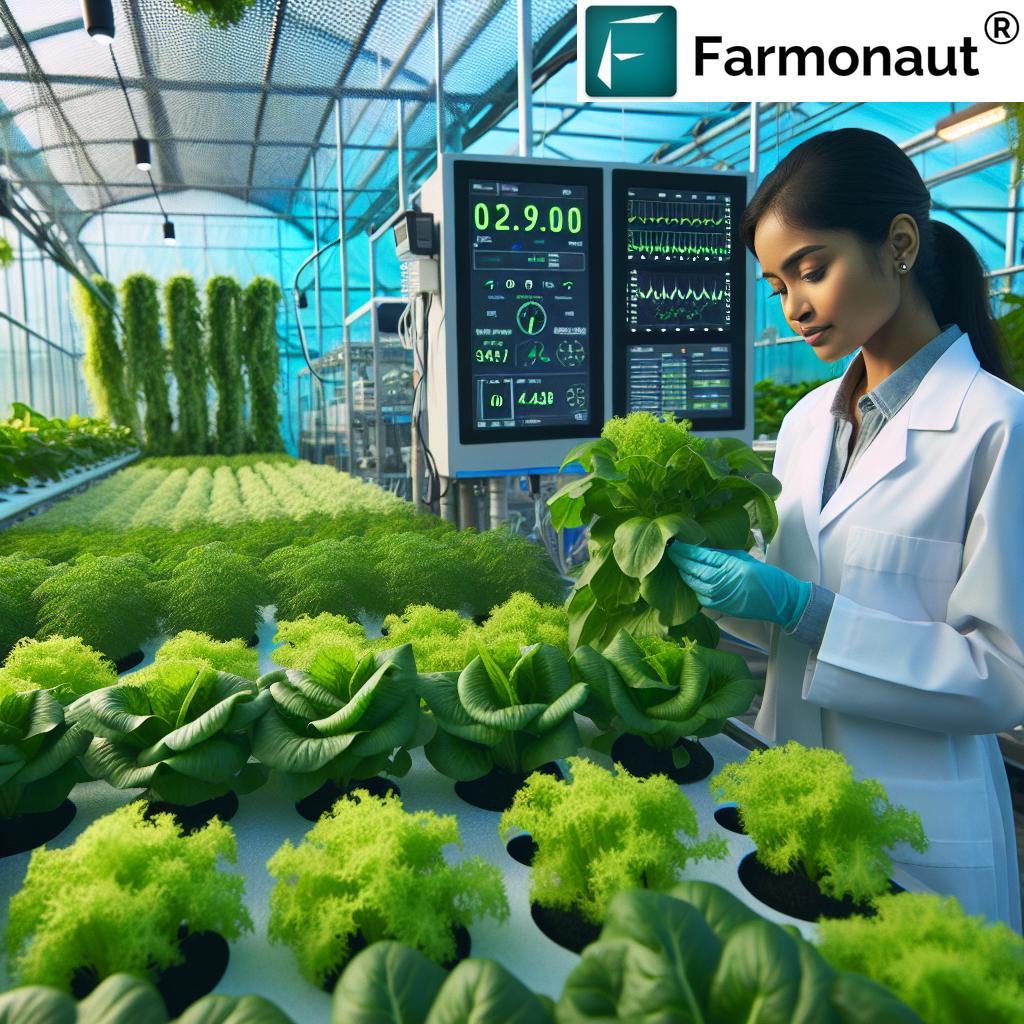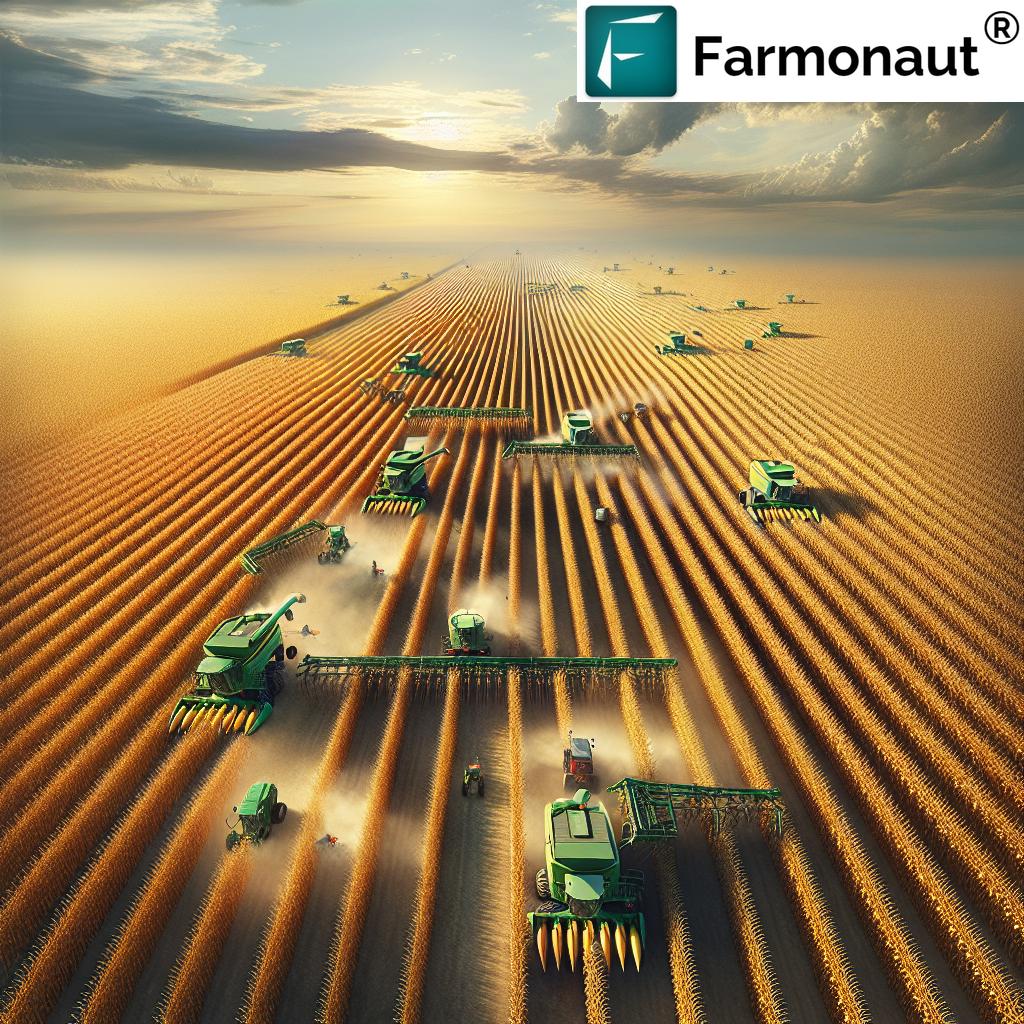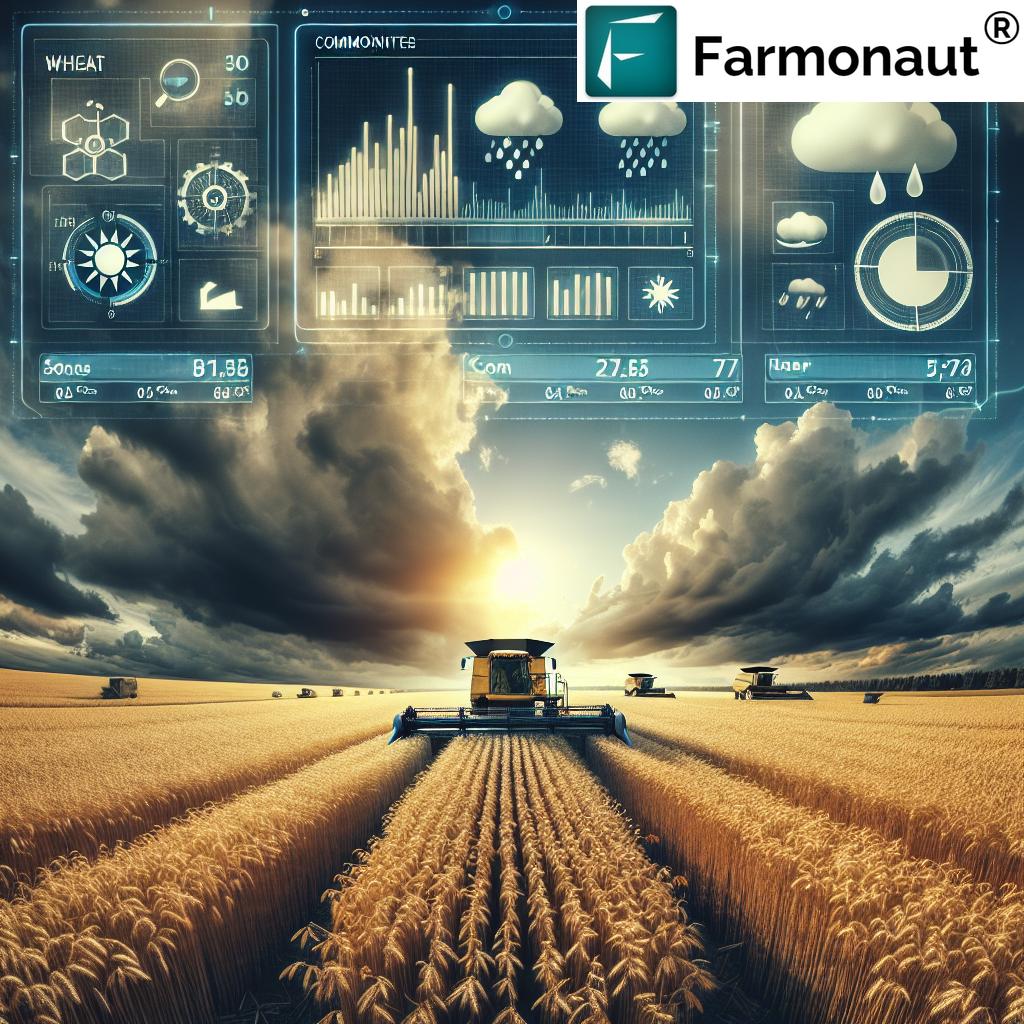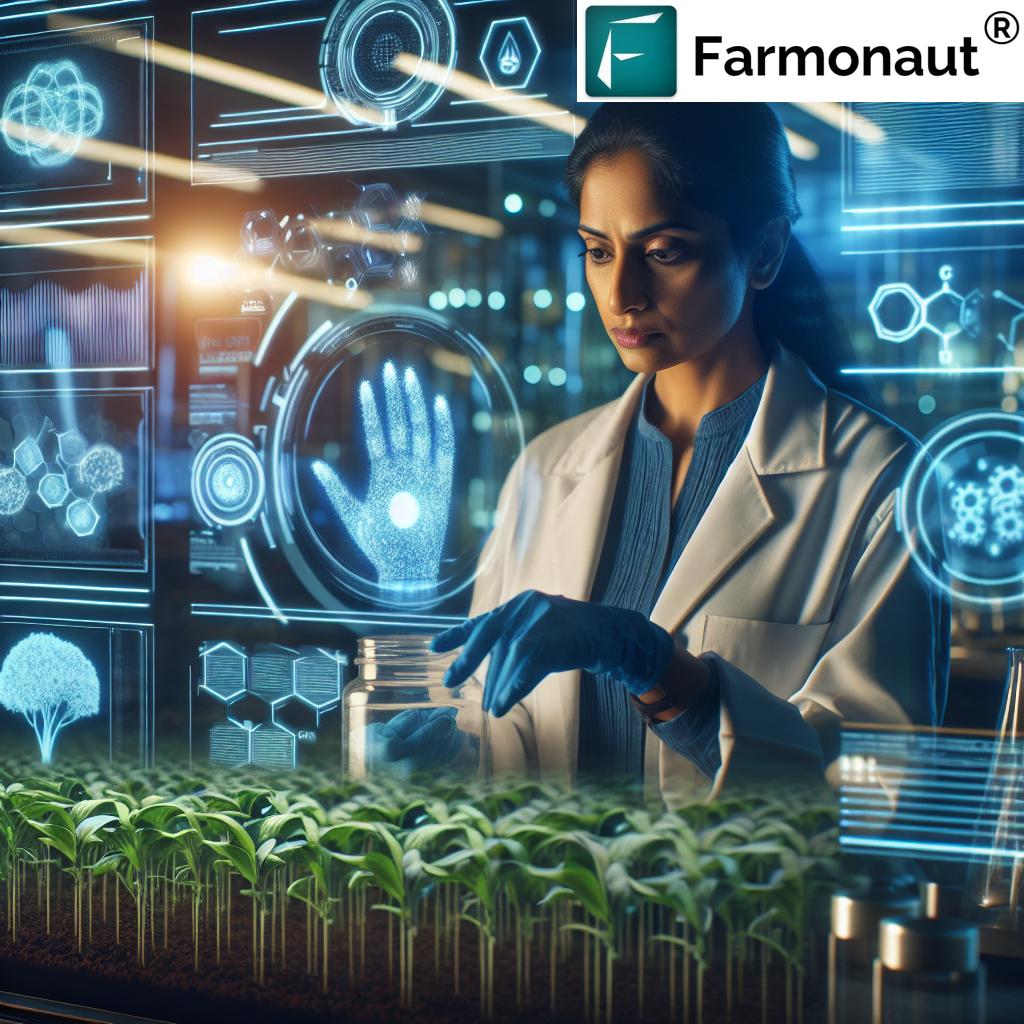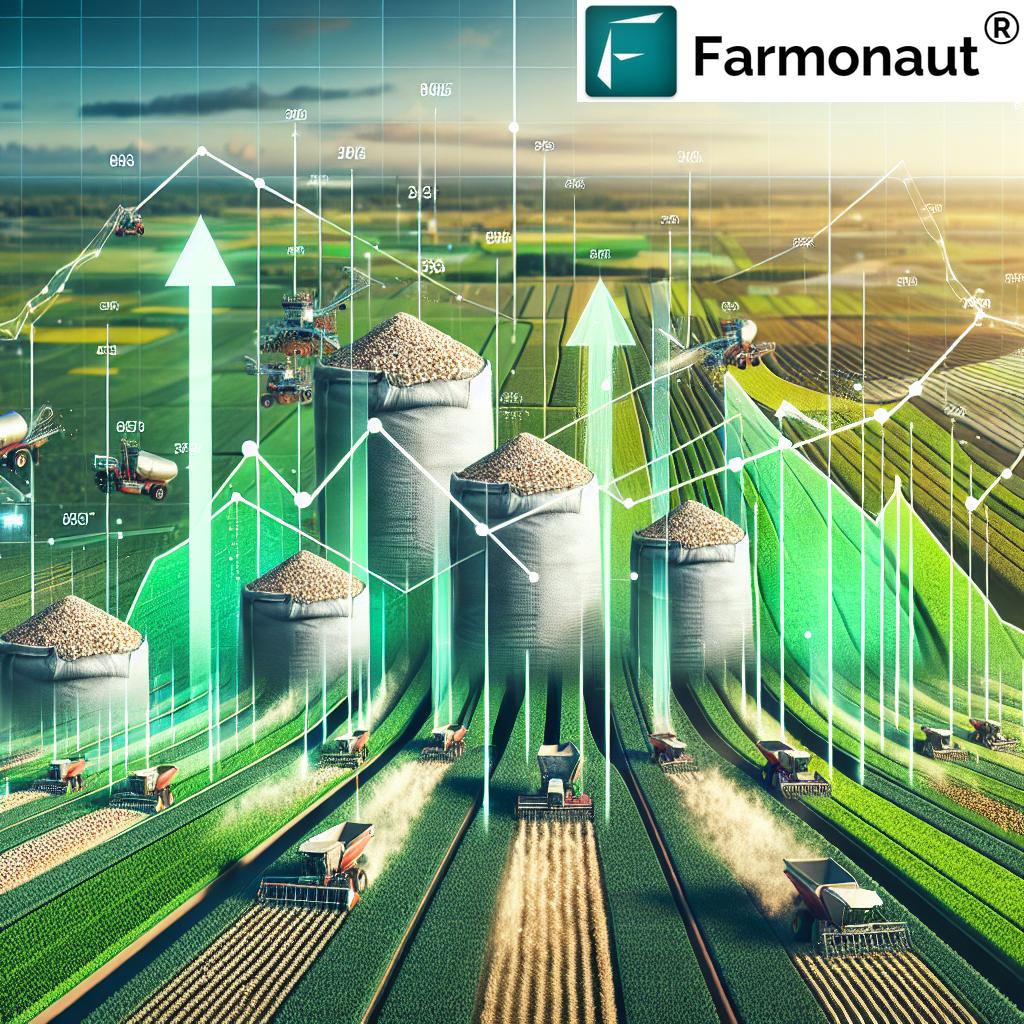Farming Technology Advancements 2025: Breakthroughs That Optimize Yields, Cut Costs, and Lower Carbon
Farming technology advancements reached a new phase in 2025. Instead of isolated tools, agriculture is now powered by integrated systems that blend precision farming, dense networks of sensors, robotics, advanced genomics, irrigation analytics, electrified equipment, and secure data platforms. These advancements in agriculture technology deliver plant-level management, reduce input costs, and cut carbon, while increasing resilience to climate stress and market volatility.
“2025 gene-edited wheat varieties delivered 10% higher yields and 8% lower fertilizer requirements in trials.”
In this comprehensive, neutral guide to technology advancements in agriculture, we explore what’s truly mainstream in 2025 and what’s coming next. From multispectral and hyperspectral sensing to autonomous tractors, from AI-driven irrigation to blockchain-backed traceability, the sector has entered a phase of rapid consolidation and practical deployment—especially where connectivity and finance enable scale.
Developers and integrators can access APIs for integrated monitoring, models, and automation hooks: Farmonaut API and API Developer Docs.
Table of Contents
- Why 2025 Marks a Turning Point in Agriculture
- Precision Farming Is Mainstream: Sensors, Imagery, and Edge Computing
- Field Robotics Beyond Prototypes: Weeding, Spraying, and Harvesting
- Indoor Vertical Farms and CEA: Efficiency per Square Meter
- Genomic Tools and Biotechnologies: From Gene Editing to Microbiomes
- Digital Twins, Analytics, and Real-Time Decision Support
- Data Platforms, Interoperability, and Traceability
- Energy Transitions: Electrified Tractors, Solar, and Microgrids
- Adoption Gaps, Finance, and Inclusion
- “2025 Farming Technology Breakthroughs — Impact & ROI” Comparison Matrix
- A Practical 2025–2030 Implementation Roadmap
- Data Governance, Standards, and Farmer Ownership
- Where Farmonaut Fits in 2025 and Beyond
- FAQ: 2025 Farming Technology Advancements
- Conclusion
Why 2025 Marks a Turning Point in Agriculture
By 2025, advancement in agriculture technology has crossed from pilots into production. Farmers rely on integrated systems—not standalone gadgets—to optimize planting, irrigation, and protection. This rapid shift is fueled by highly reliable connectivity, affordable sensors, improved computing at the edge, and mature analytics that translate data into localized actions.
- Precision farming is mainstream rather than experimental, combining satellite and drone imagery with dense sensor networks.
- Autonomous tractors and implements guided by RTK-GNSS and computer vision reliably meet labor requirements and permit night operations within weather windows.
- Robotics has moved beyond prototypes with modular robots that handle targeted weeding, spot spraying, and selective harvesting.
- CEA systems are scaled for leafy greens and herbs, integrating LED spectrum tuning, climate control, and nutrient dosing.
These systems are not silver bullets. They are enablers of better management—enhanced by models, practices, and good agronomy. The payoff: higher yields, lower costs, and measurable carbon reductions.
Precision Farming Is Mainstream: Sensors, Imagery, and Edge Computing
Farming technology advancements in 2025 transformed precision management into a daily practice. Farms routinely combine high-resolution satellite data and drone flights with ground sensors for plant-level insights. Multispectral and hyperspectral imagery detect crop stress, nutrient deficiencies, and disease well before symptoms are visible.
- Dense sensor networks feed soil moisture, canopy temperature, leaf wetness, and EC data into edge computing units.
- 5G connectivity or LPWAN transports data for analytics and alerts that allow field-level control actions (e.g., localized irrigation or variable-rate input application).
- Autonomous setups ensure tractors and implements place seeds, fertilizer, and crop protection precisely, reducing overlaps and cut-off errors.
With edge AI, a field’s operations can adapt to micro-weather shifts, improving resource efficiency and minimizing loss from heat spikes, wind, or humidity bursts.
From Reactive to Proactive: Variable-Rate Everything
Variable-rate seeds, fertilizers, and crop protection shift farming from reactive to proactive. Placement adjusts by soil zone, topography, and biomass indices. The outcome is higher uniformity at harvest with less chemical use and lower fuel consumption—a clear win in sustainability and carbon terms.
- Fine-tuned nutrient plans improve nitrogen and phosphorus efficiency.
- Targeted fungicide timings based on disease-favoring conditions reduce passes.
- Sub-field models support localized actions during critical stages (emergence, flowering).
Field Robotics Beyond Prototypes: Weeding, Spraying, and Harvesting
The biggest technology advancement in agriculture visible in fields is robotics. Modular robots now handle targeted weeding, spot spraying, and selective harvesting. AI-equipped platforms distinguish plants via computer vision, enabling selective interventions that reduce chemical use and crop loss.
- Autonomous tractors with retrofitted implements run in sync with RTK-GNSS, operating at night to capture cooler windows.
- Soft-robotic grippers and AI-driven grasping enable mechanized harvest in orchards and specialty crops with minimal bruising.
- Laser and targeted-spray systems remove weeds with millimeter precision, lowering herbicide load.
“Autonomous field robots trimmed labor hours 30% and reduced fuel consumption 12% in large-scale vegetable operations.”
The Operations Advantage: Safety, Fuel, and Timing
Autonomy changes operations planning. Machines optimize routes, calibrate on the fly, and document work for audits and certifications. Work can shift to hours with lower disease pressure or better spray deposition. That supports reducing inputs and adheres to sustainability standards.
Indoor Vertical Farms and CEA: Efficiency per Square Meter
Controlled-environment agriculture (CEA) built on stacked racks has scaled for leafy greens and herbs. Lighting and climate management integrate seamlessly with data flows from sensors, allowing tight control of growth curves.
- LED spectrum tuning modulates morphology and nutrient density.
- Closed-loop dosing automates pH, EC, and micronutrients to boost yields per square meter.
- Recirculating systems cut water use by orders of magnitude.
CEA does not replace open-field farming, but it complements it by ensuring consistent supply of sensitive crops while reducing transport and storage waste, especially near urban centers.
Genomic Tools and Biotechnologies: From Gene Editing to Microbiomes
New genomic tools and biotechnologies are delivering practical outcomes. Gene editing and marker-assisted breeding accelerate development of varieties with improved drought tolerance, nutrient efficiency, and disease resistance. High-throughput phenotyping links genetics to field performance quickly.
- Microbial seed coatings and soil microbiome management enhance nutrient cycling and resilience under heat or salinity.
- Metagenomics enables tailored inoculants suited to field-specific microbiomes.
- Digital trait-tracking helps target seed to environments with better return on investment.
Breeding goals are aligned with resource limits. The focus is reducing fertilizer use and boosting stability under extreme weather, without sacrificing marketable quality.
Digital Twins, Analytics, and Real-Time Decision Support
Field-scale digital models (digital twins) simulate outcomes for different management choices before a pass is made. When connected to sensor streams and weather forecasts, they run “what-if” analyses for irrigation schedules, seeding density, or spray timings. Predictive analytics suggest localized rates and thresholds to reduce input use and risk.
- Support decisions with quantified risk for pests and disease, not just thresholds.
- Adjust harvest timing to balance quality and carbon footprints from dryer or cold storage.
- Simulate profitability under price, cost, and climate scenarios.
Data Platforms, Interoperability, and Traceability
End-to-end data platforms connect fields to markets. Dashboards bring together weather, market prices, input availability, carbon accounting, and compliance tracking. Interoperability and APIs are essential so that devices and apps can exchange data without friction, protecting farmer autonomy and privacy.
- Blockchain-style traceability systems verify provenance and sustainability claims, strengthening premiums and certification.
- Audit trails for applications help with environmental, social, and governance (ESG) reporting.
- Models run at the edge to keep sensitive data local while syncing summaries to the cloud.
We provide satellite-powered monitoring, AI-based advisory, and blockchain-based traceability. We make these capabilities accessible through mobile, web, and API so farms and agrifood companies can build their own integrated systems and workflows without heavy hardware.
Farmonaut Traceability helps verify product journeys with cryptographic integrity, creating trust in supply chains and enabling sustainability claims. Farmonaut Carbon Footprinting provides environmental impact monitoring and carbon tracking aligned with emerging standards.
Energy Transitions: Electrified Tractors, Solar, and Microgrids
Farms are electrifying. Battery-powered implements and electrified tractors cut diesel dependence and simplify maintenance. Solar arrays, microgrids, and bioenergy power irrigation pumps and cold storage, improving resilience and lowering greenhouse gas footprints. Smart-charging aligns with production and tariffs to minimize energy costs.
- Right-sizing storage supports night operations for autonomy fleets.
- Low-voltage implements open safer, modular equipment ecosystems.
- Energy data merges with agronomic models to quantify carbon outcomes.
Adoption Gaps, Finance, and Inclusion
Adoption remains uneven. Large commercial farms deploy integrated stacks quickly, while smallholders face barriers: upfront costs, patchy connectivity, and digital literacy challenges. Public incentives, private financing, and pay-for-performance models (for verified sequestration or water savings) are bridging gaps. The goal is equitable access to the practical benefits of technology advancement in agriculture.
- Shared autonomy fleets and service models reduce CapEx hurdles.
- Training and advisory tools translate analytics into local practice.
- Policies emphasize farmer data ownership and interoperability.
Farmonaut Crop Loan & Insurance can help financial institutions verify crop conditions via satellite to streamline underwriting. Farmonaut Fleet Management aids operations teams in tracking equipment utilization and reducing fuel use. For large holdings, Farmonaut Large-Scale Farm Management centralizes monitoring and oversight. For plantation planning and advisory, Farmonaut Crop & Forest Advisory provides satellite-driven insights to guide layout and scheduling.
2025 Farming Technology Breakthroughs — Impact & ROI
To compare advancements in agriculture technology, use the evidence-informed matrix below. Estimates vary by region, crop, and baseline practices. Click column headers to sort numeric fields. The table is mobile-scrollable and designed with sticky headers for fast scanning.
| Sub‑Technology | Core Function | Primary Crops/Use Cases | Est. Yield Uplift (%) | Est. Input Cost Reduction ($/ha) | Est. Carbon Reduction (kg CO2e/ha) | CapEx Range (USD/ha) | OpEx (USD/ha/yr) | Payback (months) | Readiness (2025 TRL) | Energy Demand (kWh/ha) | Implementation Complexity | Farm Size Fit | Regional Fit | Interoperability | Risks/Constraints | ESG/Compliance Notes |
|---|---|---|---|---|---|---|---|---|---|---|---|---|---|---|---|---|
| Variable‑Rate Precision Farming | Optimize seeding, fertilizer, and chemicals by zone | Cereals, oilseeds, row crops | 5–12 | 35–90 | 150–450 | 40–180 | 10–25 | 12–24 | High (8–9) | 20–60 | M | S/M/L | Global; strongest where soils vary | APIs; satellite and edge-ready | Data quality; calibration; training | Supports nutrient caps; strong for carbon |
| Multispectral Sensors | Detect stress, disease, and deficiencies early | Field crops, orchards, vineyards | 3–8 | 15–55 | 80–260 | 25–120 | 8–20 | 10–20 | High (9) | 10–35 | L | All | Global | API-friendly; satellite + drone | Cloud cover; revisit frequency | Enables targeted spraying and water savings |
| Soil Moisture IoT | Guide irrigation timing/amount | Horticulture, drip systems, pivots | 4–10 | 25–80 | 120–380 | 60–200 | 15–35 | 12–24 | High (8) | 35–120 | M | S/M/L | Arid/semi-arid; water-constrained | Edge integrations, LPWAN | Network coverage; maintenance | Water-use compliance; basin reporting |
| Field Robotics (weeders/harvesters) | Autonomous weeding, spot spray, selective harvest | Vegetables, orchards, vineyards | 6–15 | 45–140 | 200–600 | 180–600 | 25–70 | 18–36 | Medium–High (7–8) | 60–200 | H | M/L | High-labor regions; premium crops | APIs; telematics; VRA links | Terrain; safety rules; servicing | Lower chemical use; labor safety |
| AI‑driven Irrigation | Real-time scheduling by forecast and crop stage | All irrigated crops | 5–12 | 30–100 | 160–520 | 40–160 | 12–30 | 10–20 | High (8–9) | 25–90 | M | S/M/L | Water-stressed regions | Cloud + edge; satellite weather | Metering accuracy; sensor drift | Water rights reporting; basin credits |
| Genomics (CRISPR/marker‑assisted) | Traits for drought, nutrient efficiency, resistance | Cereals, oilseeds, horticulture | 8–20 | 20–70 | 100–350 | 30–100 | 8–20 | 24–48 | High (8–9) | 0–15 | M | All | Global; regulatory variation | Seed data; twin integration | Regulatory acceptance; IP access | Lower fertilizer use; disease control |
| Data Platforms/Edge Analytics | Integrate data, forecasts, and decisions | Whole‑farm management | 3–9 | 20–65 | 90–280 | 15–80 | 10–25 | 10–18 | High (9) | 10–30 | M | S/M/L | Global | Open APIs; standards support | Data silos; vendor lock-in | ESG dashboards; audit trails |
| On‑farm Renewables | Solar/microgrids powering pumps and equipment | All irrigated/energy‑intensive ops | 0–3 | 20–120 | 300–900 | 120–600 | 5–20 | 36–72 | High (8) | 100–500 | M | S/M/L | High-irradiance regions | API load mgmt; microgrid controls | Interconnection; storage sizing | Carbon credits; RECs eligibility |
| Global Average (est.) | — | — | 4–11% | $26–90/ha | 125–430 kg CO2e/ha | $64–255/ha | $12–28/ha/yr | 18–35 months | High (8–9) | 30–130 kWh/ha | Medium | S/M/L | Global | APIs common | Training, finance | Supports ESG goals |
A Practical 2025–2030 Implementation Roadmap
Many farms ask where to start. Below is a staged approach that balances costs, capability, and risk while building toward full-stack integrated management.
- Baseline with satellite + scouting: Use multispectral indices to find variability; ground-truth with tissue and soil tests to correct nutrient and irrigation strategies.
- Add soil moisture and weather sensors: Tie into AI-driven irrigation and disease-warning models with threshold-based alerts.
- Shift to variable-rate applications: Calibrate equipment for zone-based seed and fertilizer rates; track input savings and yield.
- Introduce autonomy: Start with guided passes; expand to autonomous tasks at night for weeding or spraying.
- Connect data platforms: Integrate farm mapping, equipment logs, and analytics with APIs to reduce double entry.
- Pilot genomics and microbiome solutions: Test varieties for drought tolerance and resistance in your specific environment; add microbial inoculants where fit.
- Scale renewables and electrified equipment: Solar for pumps and charging; monitor carbon metrics and ROI.
- Adopt traceability for market access: Use blockchain-style ledgers to verify practices and unlock premiums.
Farmonaut Carbon Footprinting supports step 7 by quantifying energy use and emissions. Farmonaut Traceability supports step 8 by recording product journeys and interventions.
Data Governance, Standards, and Farmer Ownership
Policy in 2025 emphasizes data rights and interoperability. Farmers need clear consent frameworks, portable data exports, and clarity on usage rights for vendors. Standards for APIs and device identity help reduce vendor lock-in and lower total cost of ownership.
- Farmer ownership: Data generated on a farm should be under the farmer’s control, with opt-in sharing for value.
- Interoperability: Open formats and APIs allow integration with satellite analytics, robotics, and edge nodes.
- Security: Encryption and role-based access protect sensitive commercial information.
Transparent rules encourage adoption, reduce legal ambiguity, and build trust across the agri-food ecosystem.
Where Farmonaut Fits in 2025 and Beyond
We are a satellite technology company focused on making satellite-driven insights accessible to agriculture, mining, infrastructure, and defense operations through Android, iOS, web, and API. We combine multispectral monitoring, AI-based advisory, blockchain-based traceability, and fleet/resource management so users can activate practical, integrated decision support with minimal hardware.
- Satellite-Based Monitoring: We deliver vegetation health (e.g., NDVI), crop condition, and soil signals to detect stress early and direct localized actions.
- AI Advisory (Jeevn): We synthesize weather, satellite streams, and field data to deliver real-time alerts and recommendations.
- Blockchain-Based Traceability: We help record product provenance with tamper-evident ledgers.
- Fleet and Resource Management: We enable tracking and optimization of assets to reduce costs and downtime.
- Environmental Impact Monitoring: We support carbon footprint monitoring for compliance and sustainability reporting.
Explore our apps or build with APIs:
- Farmonaut API — integrate satellite analytics and advisory into your systems.
- API Developer Docs — implementation details, endpoints, and examples.
- Fleet Management — optimize routes, track equipment usage, and ensure safer operations.
- Large-Scale Farm Management — centralized oversight for distributed farms with geospatial layers.
- Traceability — verify provenance and build market trust.
- Carbon Footprinting — monitor environmental indicators and track abatement.
- Crop Loan & Insurance — satellite-based verification to streamline credit and risk tools.
FAQ: 2025 Farming Technology Advancements
What’s the biggest shift in 2025?
Integrated stacks. Precision sensing, analytics, autonomy, and data platforms are interoperable, moving agriculture beyond isolated tools to end-to-end management that yields consistent, measurable outcomes.
How do sensors and imagery work together?
Multispectral/hyperspectral imagery provides canopy-wide signals of stress and deficiencies. In-field sensors add rootzone moisture, EC, and temperature. Together they power models that trigger alerts and localized actions such as variable-rate irrigation.
Are autonomous tractors safe and practical?
Yes, where guidance, perception (computer vision), and safety protocols are enforced. They excel at repetitive tasks and permit night work during optimal weather windows, increasing productivity while reducing fuel and labor hours.
Do genomics and microbiomes reduce fertilizer use?
Many 2025 varieties target improved nutrient efficiency, while microbial inoculants enhance cycling. Combined with better diagnostics, farms can cut input use without sacrificing yield, supporting sustainability and carbon goals.
What’s the ROI for on-farm solar and electrified equipment?
Payback often falls within 3–6 years depending on tariffs, incentives, storage, and duty cycles. Benefits include lower operating costs, resilience to outages, and measurable emissions reductions that may qualify for credits.
How do I avoid vendor lock-in?
Choose systems with open APIs, documented data schemas, and export options. Ensure contracts state clear farmer ownership and consent-based data sharing.
Where does Farmonaut help?
We offer satellite-based crop monitoring, AI advisory, blockchain-based traceability, fleet/resource management, and environmental impact tracking. These services enable farming teams, agribusinesses, and institutions to build practical, interoperable workflows.
Conclusion
In 2025, technology advancements in agriculture are not about a single invention. They are about systems that combine sensors, imagery, robotics, genomic innovation, irrigation intelligence, and digital platforms. The payoff is higher yields, lower costs, and lower carbon—with better resilience to climate variability.
Adoption is uneven and there are gaps. Financing, connectivity, and training remain essential. Clear data governance and interoperability keep farmer interests at the center. Continued investment in R&D and rural infrastructure will determine how fully these tools translate into durable prosperity and sustainable food systems.
Farmonaut is a satellite technology provider—not an online marketplace, a seller of inputs or machinery, nor a regulator. We focus on affordable satellite analytics, AI advisory, traceability, and resource management tools that fit into diverse agtech stacks. Explore the app links above or build with our APIs to accelerate your precision farming journey.




